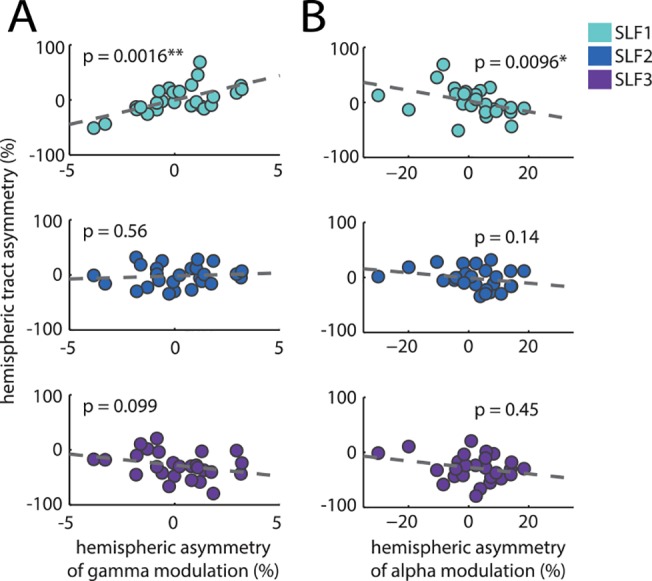Fig 4. (A) Correlation of gamma modulation asymmetry in the middle occipital cortex (see Fig 2) with volumetric asymmetry of the three SLF branches. The gamma modulation asymmetry was calculated by comparing the degree of attentional modulation (left versus right spatial cue) in the right versus the left hemisphere. In the case of the SLF1, gamma modulation asymmetry was strongly positively correlated with volumetric hemispheric asymmetry (p = 0.0016, significant at the p < 0.005 level after Bonferroni correction for three comparisons). Neither SLF2 nor SLF3 showed such a correlation. (B) The same correlations but for alpha modulation asymmetry in superior occipital cortex (see Fig 2). Only SLF1 volumetric hemispheric asymmetry showed a significant negative correlation with alpha modulation asymmetry (p = 0.0096, significant at the p < 0.05 level after Bonferroni correction for three comparisons). As such, subjects with stronger left than right tracks in SLF1 were able to modulate the left compared to right hemisphere alpha and gamma power to a larger degree.

